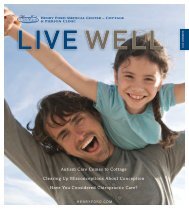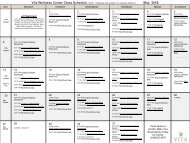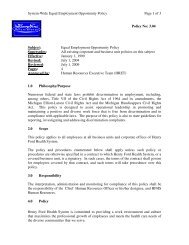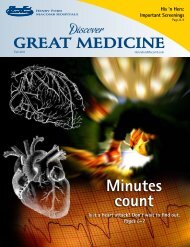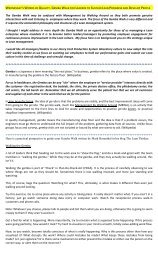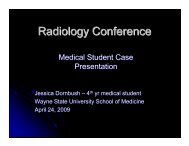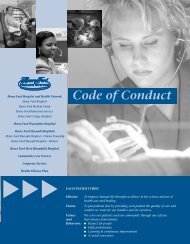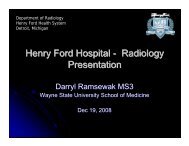Plantar Fasciitis/Nodular Fasciitis Morton Neuroma/Bursa Plantar ...
Plantar Fasciitis/Nodular Fasciitis Morton Neuroma/Bursa Plantar ...
Plantar Fasciitis/Nodular Fasciitis Morton Neuroma/Bursa Plantar ...
You also want an ePaper? Increase the reach of your titles
YUMPU automatically turns print PDFs into web optimized ePapers that Google loves.
<strong>Plantar</strong> Foot Pathology:<br />
<strong>Plantar</strong> <strong>Fasciitis</strong>/<strong>Nodular</strong> <strong>Fasciitis</strong><br />
<strong>Morton</strong> <strong>Neuroma</strong>/<strong>Bursa</strong><br />
David Fessell, MD<br />
University of Michigan<br />
Ann Arbor, Michigan, USA<br />
• <strong>Plantar</strong> <strong>Fasciitis</strong><br />
• <strong>Plantar</strong> Fibromatosis<br />
• <strong>Morton</strong>’s <strong>Neuroma</strong>/<strong>Bursa</strong><br />
• Foreign bodies<br />
Recommend: Jeswani T, Morlese J, McNally EG,<br />
Clinical Radiology 2009, 64:931-39<br />
<strong>Plantar</strong> <strong>Fasciitis</strong>:<br />
<strong>Plantar</strong> <strong>Fasciitis</strong>:<br />
• Overuse<br />
– seronegative arthritis<br />
• > 4 mm, hypoechoic<br />
• Tender on palpation<br />
• +/- Hyperemia<br />
<strong>Fasciitis</strong><br />
• Versus MRI:<br />
– Sensitivity 80%<br />
– Specificity 89%<br />
<strong>Fasciitis</strong><br />
Sabir N, J US Med 24:1041<br />
Jeswani T, Clin Rad 64:931<br />
Sabir N, J US Med 24:1041<br />
normal<br />
<strong>Plantar</strong> Fibromatosis:<br />
--Usually hypoechoic<br />
-- +/- hyperemia<br />
<strong>Plantar</strong> Fibromatosis:<br />
Solid mass in continuity with the plantar fascia:<br />
From C. Brandon, MD<br />
1
<strong>Plantar</strong> Fibromatosis:<br />
<strong>Plantar</strong> Fibromatosis:<br />
calcaneus<br />
Differential Diagnosis:<br />
– Muscle/fat lesions<br />
– Foreign body<br />
– Xanthoma (Achilles)<br />
– <strong>Plantar</strong> fascial tear<br />
• Hx trauma and tear/fluid<br />
at US<br />
transverse<br />
-- Assess for: location/surrounding infiltration further eval.<br />
Associations: Palmar and superficial fibromatosis<br />
Men > women<br />
Griffith JF, AJR 179:1167<br />
Jeswani T, Clin Rad 64:931<br />
<strong>Morton</strong>’s <strong>Neuroma</strong><br />
• Often a clinical Dx<br />
• US helpful in:<br />
– Atypical cases<br />
– Multiple neuromas<br />
– Bursitis vs. neuroma<br />
• Location: most<br />
common 2d and 3d web<br />
space<br />
<strong>Morton</strong>’s <strong>Neuroma</strong><br />
• US appearance:<br />
hypoechoic/anechoic<br />
• Assess for continuity<br />
with interdigital nerve<br />
• US/MR comparable<br />
accuracy<br />
Khoury V, Sem Mus Rad 11:149<br />
trv<br />
long<br />
Khoury V, Sem Mus Rad 11:149<br />
Images from M. Brigido, MD<br />
Intermetatarsal Bursitis<br />
Intermetatarsal Bursitis<br />
• Compresses with transducer pressure<br />
• Anechoic<br />
• Can occur with <strong>Morton</strong>’s over<br />
estimate size of <strong>Morton</strong>’s<br />
• Physiologic bursal fluid: up to 3 mm<br />
(first-third web spaces)<br />
No Compression<br />
With Compression<br />
Khoury V, Sem Mus Rad 11:149<br />
2
<strong>Morton</strong>’s <strong>Neuroma</strong> & <strong>Bursa</strong>:<br />
<strong>Morton</strong>’s and <strong>Bursa</strong><br />
--Entering nerve root visualized<br />
--3d web space neuroma<br />
--Associated intermetatarsal bursa<br />
US of <strong>Morton</strong>’s <strong>Neuroma</strong><br />
Technique:<br />
1. Probe plantar/finger<br />
dorsal<br />
2. Probe dorsal/finger<br />
plantar<br />
3. Mulder’s maneuver:<br />
probe plantar/squeeze<br />
US of <strong>Morton</strong>’s <strong>Neuroma</strong><br />
Technique:<br />
1. Probe plantar/finger<br />
dorsal<br />
2. Probe dorsal/finger<br />
plantar<br />
3. Mulder’s maneuver:<br />
probe plantar/squeeze<br />
US of <strong>Morton</strong>’s <strong>Neuroma</strong><br />
Technique:<br />
1. Probe plantar/finger<br />
dorsal<br />
2. Probe dorsal/finger<br />
plantar<br />
3. Mulder’s maneuver:<br />
probe plantar/squeeze<br />
<strong>Morton</strong>’s: Mulder’s Maneuver<br />
3
Foreign Bodies: 4 Key Points<br />
Wood Foreign Body:<br />
1. FBs are echogenic<br />
2. Hypoechoic halo,<br />
+ shadowing/reverb.<br />
trv<br />
Horton, L. K. et al. Am. J. Roentgenol. 2001;176:1155-1159<br />
<strong>Plantar</strong> Foreign Bodies:<br />
Foreign Bodies: 4 Key Points<br />
metal<br />
64 y.o. stepped on needle<br />
3. Use Doppler<br />
Evaluation<br />
– Aids detection of FB<br />
– Fluid vs. phlegmon<br />
plastic<br />
16 y.o. plantar mass<br />
Boyse T D et al. Radiographics 2001;21:1251-1256<br />
Summary: 4 Key Points:<br />
4. Assess for associated<br />
complications<br />
--Abscess; tenosynovitis;<br />
--Septic Joint; osteomyelitis<br />
--Tendon, vessel, nerve injury<br />
14 y.o. stepped on glass:<br />
long<br />
• Glass removed in the emergency department<br />
• Clinical Impression: possible tendon tear<br />
US: FHL rupture due to foreign body<br />
4
56 y.o. stepped on glass:<br />
US of the <strong>Plantar</strong> Foot:<br />
Glass FB<br />
1. <strong>Plantar</strong> <strong>Fasciitis</strong><br />
2. <strong>Plantar</strong> Fibromatosis<br />
3. <strong>Morton</strong>’s <strong>Neuroma</strong><br />
4. Foreign bodies<br />
PPT laceration<br />
Boyse T D et al. Radiographics 2001;21:1251-1256<br />
5




